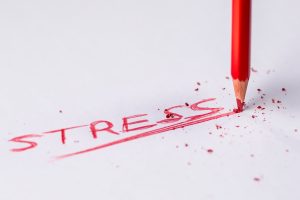Prepare a Summary: Summarize the Main Points for Easy Reference
Planning and preparing a lesson is an important part of teaching. In order to ensure that the lesson runs smoothly, it is important to create a summary that includes the main points. This summary should be easy to reference and understand, so the audience can quickly grasp the key concepts.
A summary should include all the major details, while still being concise. If a lesson is particularly long or complicated, it can be helpful to break the summary down into smaller, manageable pieces. This allows the audience to quickly reference any key points, without having to read through the whole lesson plan again.
When creating the summary, it is important to consider the audience. Depending on the knowledge level of the learners, some parts may need to be simplified or elaborated upon. Additionally, the summary should be written in a way that is easy to comprehend, avoiding overly-complex language or jargon.
Once the summary has been written, it is beneficial to look it over a few times to ensure accuracy. Make sure that all the major points are included and that there are no errors. It can also help to discuss the main points with a colleague or friend, as they may pick up on anything that has been missed.
By preparing a summary of the main points, a lesson plan can be quickly and easily referenced. This allows the instructors to use their time more effectively and ensure their audience will fully understand the material.
Check for Prerequisites
Before you teach a lesson, it is important to make sure all the pre-lesson materials are available. This includes resources such as textbooks, worksheets, audio-visuals, reference materials, and any other items that may be necessary for your lesson plan. A thorough check of all prerequisites before the lesson begins will help ensure that your lesson is completed on-time and that no important pieces of information have been left out.
You should ensure that your audience has access to all the necessary materials so that they can understand the key concepts you will be teaching. You should also provide enough material for everyone in the class. In addition, you should have backup plans in case any materials become unavailable, or if any technical issues arise.
If any materials need to be prepared in advance, such as worksheets or handouts, examine them beforehand to make sure they are accurate and to ensure that any errors are corrected. If there is any software or equipment that needs to be installed prior to the lesson, do so ahead of time to make sure that everything is working correctly.
By making sure that all pre-lesson materials are available and ready to go, you will be setting your lesson up for success. Taking the time to properly prepare and check for prerequisites will give you the confidence to deliver a successful lesson.
Establish Ground Rules
It’s important to establish ground rules in any classroom or learning environment. Ground rules provide an opportunity for everyone involved in the lesson to understand what behavior is expected of them. This helps to create an atmosphere conducive to learning and ensure everyone feels safe and respected.
Ground rules can be anything that suits the learning environment. For example, they may include being on time, communicating respectfully, and listening to each other. It is also important to create a safe and comfortable space for learners, so allowing for breaks if needed and having snacks available are great ideas.
When establishing ground rules, it’s a good idea to get input from the learners. This not only encourages their participation in the lesson, but it also ensures that the ground rules are seen as mutually beneficial.
Finally, it’s essential to make sure the ground rules are consistently enforced. If rules are broken, it is important to address the issue immediately and be consistent in your approach.
Ground rules are an important part of any lesson plan and will help ensure everyone in the classroom feels respected and comfortable. Make sure to take the time to create ground rules that work for the environment, and reinforce them throughout the lesson.
Explain Why You’re Teaching: Explain to Your Audience Why This Information is Valuable
One of the most important aspects of writing a good lesson plan is to make sure you explain to your audience why the material you are teaching is valuable. Learners need to understand the relevance of the information for them in order to gain something from it. When you explain why you are teaching something and how it can help their lives, you create an emotional connection between them and the material.
For example, if you’re teaching them how to use a spreadsheet, you should explain why they need to know how to use a spreadsheet. You might tell them that it will help them better manage their finances or track their progress in any activity. By explaining why the material is valuable, you give your learners a reason to pay attention and take away something helpful from the lesson.
You can also tell stories related to the material. For instance, if you are teaching grammar, you can tell your students how you once saw someone make an embarrassing mistake because they didn’t know how to use a comma. This kind of story can help your students understand why the material is important and keep them engaged throughout the lesson.
In addition to explaining the value of the material, you should also let your students know why you are teaching it. Many people appreciate hearing that the instructor genuinely cares about helping them learn. You may also want to explain what makes you the right person to be teaching this lesson. For example, you could explain that you have been working with spreadsheets for years and want to share what you have learned with your students.
Overall, it is important to explain why you’re teaching and why the information is valuable for your audience. This helps you to create an emotional connection and foster learning. By providing context and background information, you help your students understand why the material is important.
Creating Written Plans: Step-by-Step
To ensure a successful and effective lesson, it is important to create written plans. This means creating an outline or plan for each phase of the lesson.
First, determine the length of the lesson. It’s important to be realistic with the timeframe and adjust the length of the lesson accordingly.
Next, identify key points to include in the plan. This may be topics, activities, demonstrations, etc. that are relevant to the lesson.
Then, create a timeline with everything necessary for the class. This includes the introduction, activities, discussion, review, assessment and concluding activity.
After that, it’s important to make sure that you have all the materials and resources needed for the lesson. This can range from handouts, worksheets, visuals, etc.
Finally, review the plan, making sure that all key points have been addressed. Make any necessary adjustments and edit for clarity.
When it comes to writing a good lesson plan, taking the time to create a well-crafted written plan will help ensure the success of the lesson.
Review the Plans
Once you have written your lesson plans, it is important to take the time to review and revise them. As you look through your plans, ask yourself if the lesson objectives have been met; if there is enough material to cover all of the objectives; if the methods are appropriate for the learners; and if the lesson is age-appropriate. Revising the plans ahead of time will help to ensure that the lesson runs smoothly and that your learners get the most out of it.
- Are the lesson objectives met?
- Have all of the objectives been addressed?
- Are the methods appropriate for the learners?
- Is the lesson age-appropriate?
It is also a good idea to review your plans with someone else for feedback. This can be a colleague, mentor, or supervisor – anyone who can provide an objective point of view. They may suggest changes or improvements to make the lesson more effective or engaging.
Lastly, review your plans just before the lesson to make sure everything is still in order. This is the time to think about any contingencies and to make sure that all materials are available. Taking the time to review and revise your plans will help to make your lesson run as smoothly as possible.








